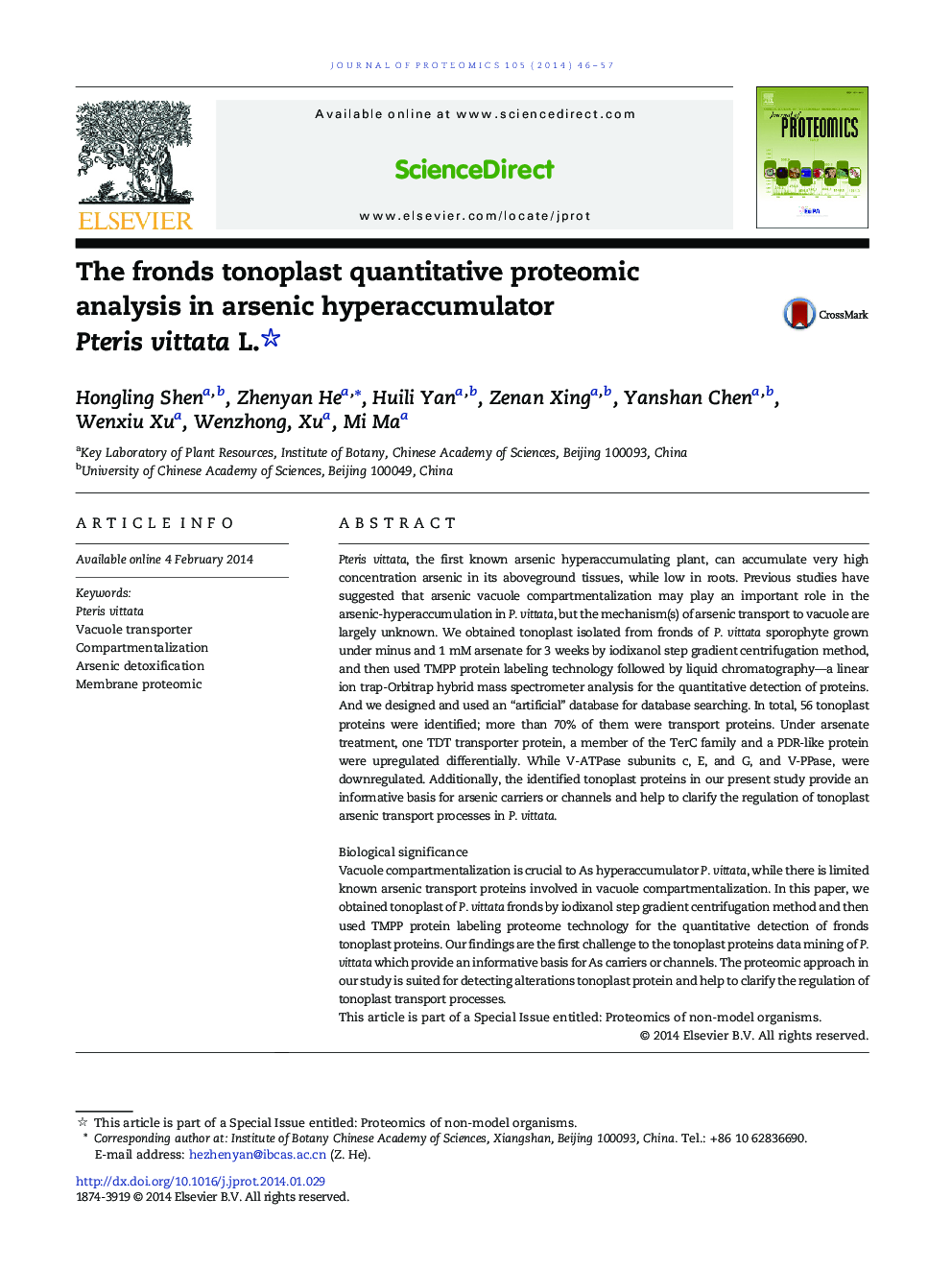| کد مقاله | کد نشریه | سال انتشار | مقاله انگلیسی | نسخه تمام متن |
|---|---|---|---|---|
| 1225143 | 1494775 | 2014 | 12 صفحه PDF | دانلود رایگان |

• Vacuole sequestration is critical for As-hyperaccumulation in Pteris vittata.
• We obtained tonoplast-enriched fractions of P. vittata fronds for the first time.
• TMPP labeling quantitative technology detected protein changes under As(V).
• A database was designed based on the special evolution position of P. vittata.
• 7 proteins of the 42 identified vacuole transporters expressed differentially
Pteris vittata, the first known arsenic hyperaccumulating plant, can accumulate very high concentration arsenic in its aboveground tissues, while low in roots. Previous studies have suggested that arsenic vacuole compartmentalization may play an important role in the arsenic-hyperaccumulation in P. vittata, but the mechanism(s) of arsenic transport to vacuole are largely unknown. We obtained tonoplast isolated from fronds of P. vittata sporophyte grown under minus and 1 mM arsenate for 3 weeks by iodixanol step gradient centrifugation method, and then used TMPP protein labeling technology followed by liquid chromatography—a linear ion trap-Orbitrap hybrid mass spectrometer analysis for the quantitative detection of proteins. And we designed and used an “artificial” database for database searching. In total, 56 tonoplast proteins were identified; more than 70% of them were transport proteins. Under arsenate treatment, one TDT transporter protein, a member of the TerC family and a PDR-like protein were upregulated differentially. While V-ATPase subunits c, E, and G, and V-PPase, were downregulated. Additionally, the identified tonoplast proteins in our present study provide an informative basis for arsenic carriers or channels and help to clarify the regulation of tonoplast arsenic transport processes in P. vittata.Biological significanceVacuole compartmentalization is crucial to As hyperaccumulator P. vittata, while there is limited known arsenic transport proteins involved in vacuole compartmentalization. In this paper, we obtained tonoplast of P. vittata fronds by iodixanol step gradient centrifugation method and then used TMPP protein labeling proteome technology for the quantitative detection of fronds tonoplast proteins. Our findings are the first challenge to the tonoplast proteins data mining of P. vittata which provide an informative basis for As carriers or channels. The proteomic approach in our study is suited for detecting alterations tonoplast protein and help to clarify the regulation of tonoplast transport processes.This article is part of a Special Issue entitled: Proteomics of non-model organisms.
Figure optionsDownload high-quality image (235 K)Download as PowerPoint slide
Journal: Journal of Proteomics - Volume 105, 13 June 2014, Pages 46–57